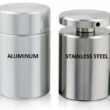Difference Between Supermarket And Department Store
Supermarket
Modern grocery retailing outlets can be divided into five different categories: the convenience store, the conventional supermarket, the superstore, the limited-assortment store, and the warehouse store.
A convenience store is relatively small, open throughout most of the day and night, and carries only a limited number of “impulse-buying” goods (for example, candy) and everyday items (milk, bread), some stores also providing fuel for motor vehicles. It is aimed at capturing the consumer who wants to purchase a few things quickly. Prices in these stores are higher because consumers are willing to pay more for the convenience of handy location and fast service. In the late 1990s there were nearly 60,000 convenience stores in the United States, generating a total of $90 billion in sales (including gasoline sales), or 7% of all grocery sales, 5% of all fast-food sales, and 20% of gasoline sales.
An expanded version of the traditional supermarket, the superstore features considerably more floor space as well as more selection, including a higher proportion of nonfood items (for example, pharmaceuticals, automotive goods, flowers, cards, small appliances, garden supplies, film, videotapes, books). Profit margins are somewhat higher.
Department Store
Department Store, a retail establishment selling wide assortments of varied merchandise, primarily apparel, housewares, and home furnishings. These merchandise lines are normally arranged in separate sections, or departments, each having a separate accounting system (departmental code) and manager but all united under a single store management. Most department stores today are part of a chain operation, or retail enterprise having numerous stores located throughout a region or wider area.
Department stores evolved during the latter half of the 19th century, as a result of the expansion of manufacturing, better railroad transportation, and the growth of larger cities. The development of mass production not only made mass distribution necessary but also created a need for new retailing techniques. Consequently, many general merchandise stores, by broadening stocks and setting up departments, converted to department stores. Before the 19th-century, an early version of the department store existed in some European cities, but these were buildings operated by landlords who merely leased space to independent shopkeepers.
Supermarket vs. Department Store



